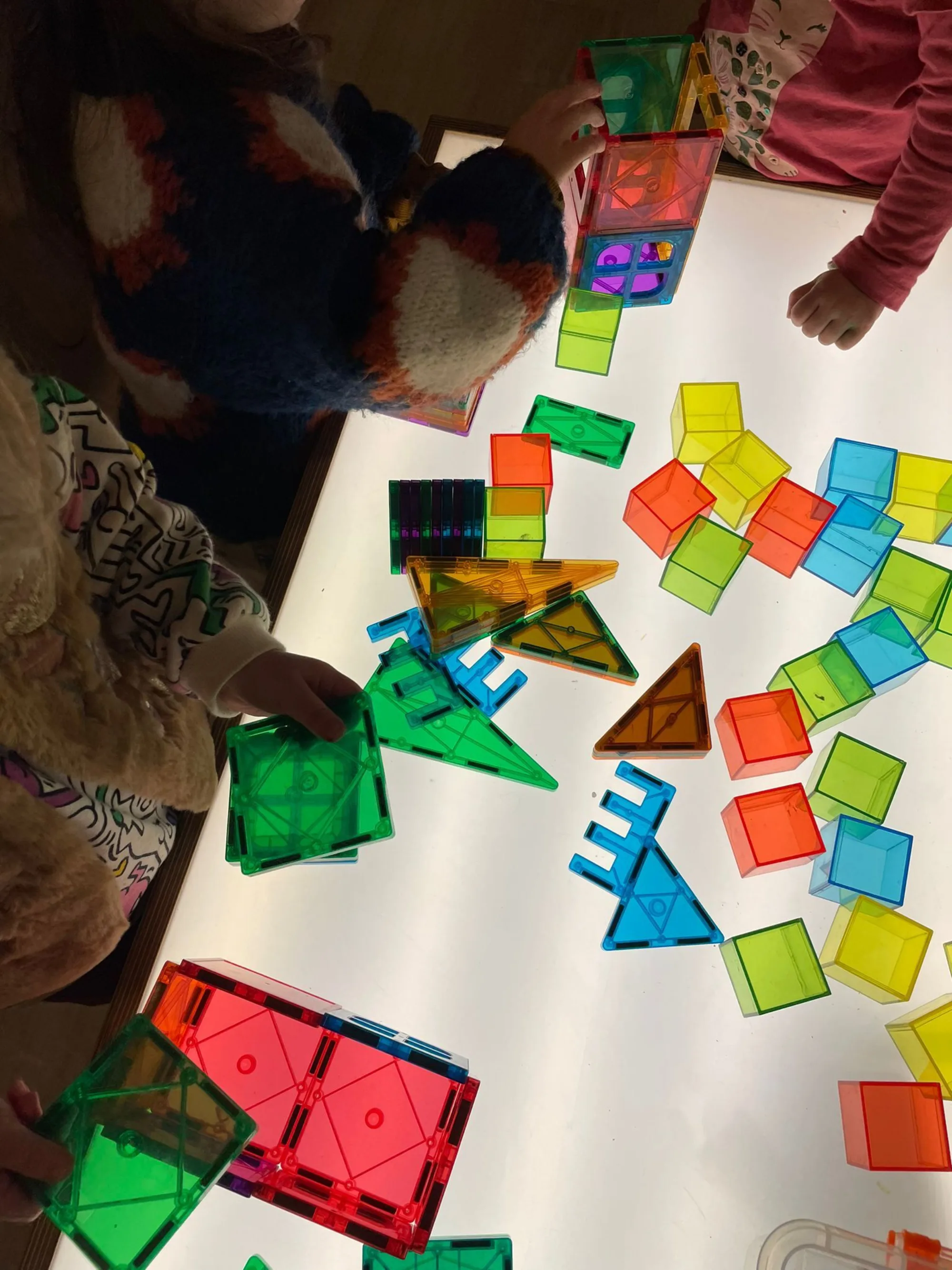Focus
The preschool: a place of social experiences
What about our support in empathy, expression of emotions, and conflict resolution?
Our daily life as kindergarten teachers also involves guiding children through their social and emotional experiences. When a conflict arises or when a child communicates through their behavior that they are feeling discomfort or unease, we all hope for a positive resolution. Here are some examples of real-life situations that illustrate how these skills are a full-fledged learning experience, and often, it's the children who surprise us.
"Here you go!"
At school, we have a box of magnetic blocks that is very popular. Sometimes, children naturally come together to work on a shared construction, and it's at these times that one of them often shares the toys they have in their hands to involve everyone fairly. This is also an opportunity to unconsciously work on the concept of sharing.
"It's normal... but it's better now."
That morning, a Kindergarten student had faced a series of unpleasant events: an incomplete night's sleep, a drawing ruined, frustration during an activity, and her dress getting wet from another child. It was too much, and at one point, she simply became inconsolable. I went to her, trying to calm her and showing empathy, 'I see that it's difficult for you this morning. If you want, take a moment in a corner, and you can come out when you feel better.' I also asked the rest of the group to please show patience and gentleness towards this child. The morning went on, and before heading to the park, she came to me and said, 'You know, this morning, I wasn't doing well. It's normal: my drawing got torn, then I couldn't do the work, and finally, my dress was wet... I was sad, it was tough, but I'm feeling better now.'"
"It needs to be fixed now."
Conflicts are common at school: for a game, a drawing, a misunderstanding. When we intervene and see a child crying, we ask witnesses to tell us what happened. We listen, and then we rephrase the situation. This is when the repair needs to happen. Often, we give children several choices: say sorry, give a hug, a kiss, or draw something. Then, we encourage the children to work together to repair the harm done.
"Why is he/she crying?"
Hearing one of their peers cry often raises questions among the children. We then provide support by verbalizing with the child affected by sorrow and explaining the situation to the friends. This helps put words to the reasons for sadness or anger. The responses from the classmates are often very kind and spontaneous: there are those who will immediately go to the friend to console them without saying a word, there are those who ask for a tissue to help them clean their nose or dry their tears (addressing a physiological issue), and there are those who will try to find the comfort object right away without being asked.
I cannot conclude this article without mentioning the 'free' hugs that often occur in unexpected moments without 'apparent reasons' and never fail to surprise us. For me, they are simply proof that children naturally feel affection for one another, regardless of what happened before or what will happen next. It's in these moments that we just need to appreciate because that's also the joy of working with children.

Similar articles